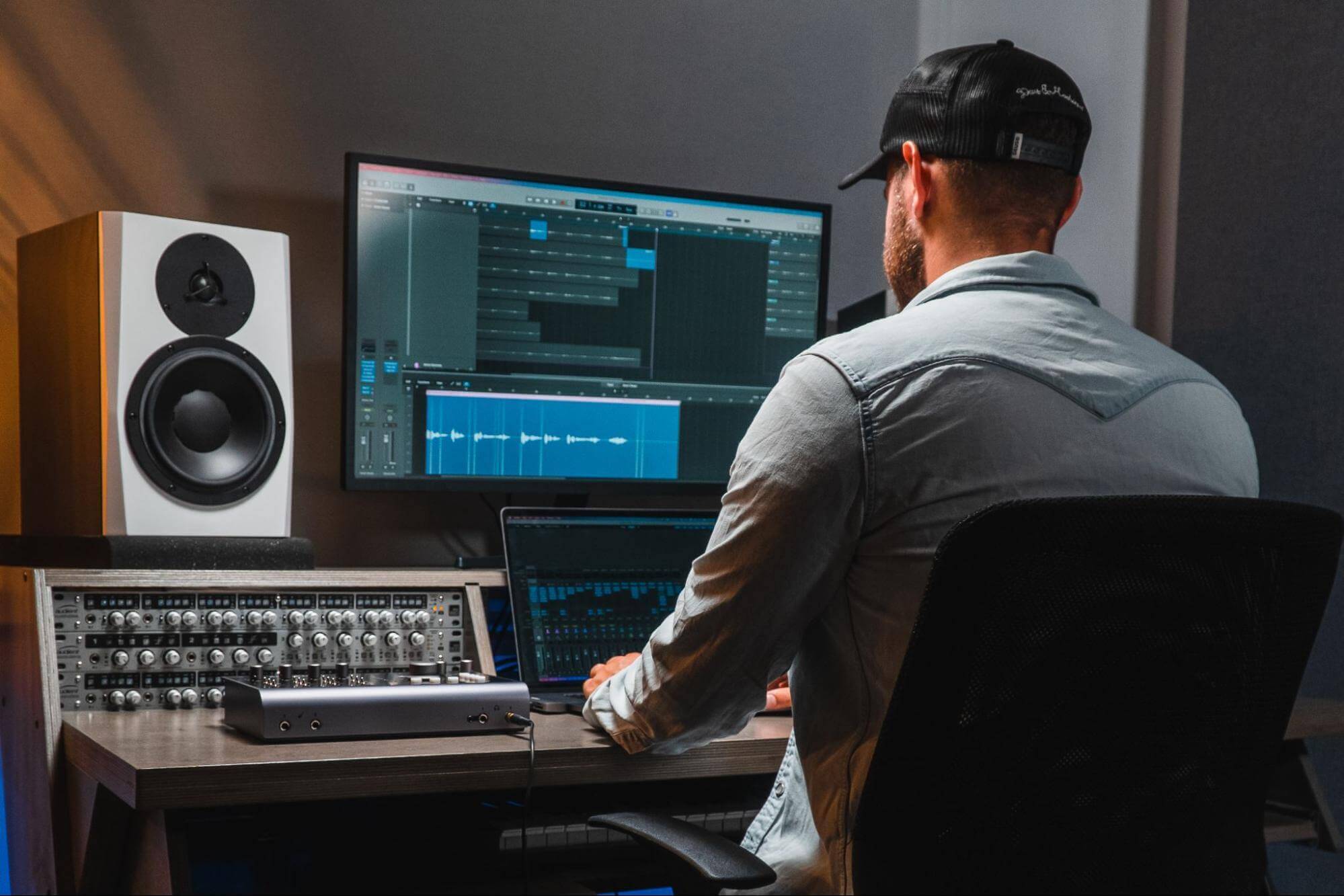When planning to record any combination of multiple parallel instrumental and/or vocal parts, one of the first decisions to be made is whether to do it live or through overdubbing.

By ‘live’, we mean recording the whole band – whether that’s drums, bass, guitars and vocals, a single performer’s voice and guitar, or any other combination of elements – together as a single performance. Overdubbing, on the other hand, means piecing a track together by recording each element on its own, over the top of those that have already been recorded, the consequent independence of every element making subsequent stages of the production process easier, from editing to mixing. You might first record the drums, then have the bassist record their part over the drum track, followed by the guitars, then the vocals, etc.
Which of the two methods you elect to go for will come down to multiple factors and – some negotiable, others less so. The first is the make-up of the outfit you’re recording: overdubbing becomes less of a consideration with a solo singer-songwriter than a full band, for example, as the former’s entire presentation may hinge on that organic blend of simultaneously performed vocal and guitar, and the simplicity of that configuration makes live recording comparatively straightforward.

Then there’s the equipment you have at your disposal. If you can only get your hands on a couple of microphones, obviously you won’t be able to multitrack a full band. With two-track stereo recording as your only option, beyond a bit of master bus processing, you’ll be forever stuck with what you capture on the day, for better or worse – mixing simply isn’t an option. In that particular circumstance, then, overdubbing is certainly the way to go unless you’re intentionally aiming for a raw, edgy feel.
Your audio interface will impose similar restrictions. For overdubbing or two-track live recording, the two-in Audient iD4 will suffice; for multitracking, you’ll need to up that number with the iD14, iD22 or iD44, providing up to 20 inputs through ADAT expansion. Take a closer look at our iD series comparison chart and find out which one is best for you.
Consider your studio setup, too. If all the band members are in the same room, playing fully amplified, you’ll inevitably capture a lot of microphone bleed across tracks, which can be a real headache at the mixing stage. How much of a headache will depend on the specifics of your space and gear, but you can dodge all this entirely by overdubbing instead.
With those factors and sticking points addressed, then, let’s look at the benefits of each workflow.

The case for live recording
Vibe and authenticity
Perhaps the biggest plus for recording live with regard to the quality of the end result, is that you’ll capture the full, glorious power of a band performance, with the musicians reacting to each other consciously and subconsciously, and feeding off their shared creative energy. For many bands and producers, this overrules everything else and makes start-to-finish overdubbing a cop-out.
Spontaneity and happy accidents
Committing to a full band performance, with no easy way to edit anything after the fact, prevents overthinking and encourages acceptance of those little imperfections that can actually enhance a song. And of course, mic bleed aside, multitracking live still gives plenty of control over levels, EQ, dynamics and processing on a per-track basis at the mixing stage.
Speed
Assuming your band are well rehearsed, recording a track live takes precisely the amount of time needed for the band to play it from start to finish. Of course, if they aren’t properly prepared, you could be at it for hours, enduring take after take, with the quality gradually dropping as patience begins to fray. That’s a separate issue that can’t really be blamed on the recording methodology itself, though.

The case for overdubbing
Maximum precision
With the ability to record as many passes as you need in order to get a perfect take for every individual part, overdubbing is a no-brainer if you want your track to sound technically ‘perfect’.
The pressure’s off
With overdubbing, you don’t have to start the whole band recording again just because the guitarist flubbed the middle eight. Every part is bagged independently of the others, so you only ever need to deal with one element at a time.

Much easier editing and mixing
Although a clean set of multitracks (ie, with minimal mic bleed) will enable a good level of mix control, overdubbing affords you total freedom to do whatever you like to every track element – detailed editing, replacing, processing, mixing… literally anything is possible. And, of course, if a part turns out to just not be working while you’re in the heat of the mixing stage, you can get the musician responsible to quickly re-record it without having to deal with residual bleed from the rejected performance in other tracks.
The global studio
Overdubbing takes the physical location of the musicians involved out of the equation, doing away with the need to get them all together at any point if you can’t (or don’t want to!). There are various solutions available for recording over the internet, or you can let band members record their own parts in their homes or studios, for import into the project at your end.
The best of both worlds
In terms of flexibility, it might appear that overdubbing is the superior of the two approaches, but that first plus for live recording really is a big one: there’s nothing quite like the energy of a band playing together, and much of that is undoubtedly lost when the musicians instead take turns to layer in their parts.
Ultimately, then, the optimal method will often be a fusion of the two techniques, recording the band live with as much multitrack separation as possible, then overdubbing any mistakes or revisions as required. Achieving such separation will mean everyone monitoring through headphones; guitar amplification being kept virtual or fed into the audio interface directly, rather than miked up (you can always capture the DI as well for re-amping later); and vocal mics being isolated from the drums (and vice versa). But getting the monitor mix sounding good enough to creatively ignite the band shouldn’t be too much of a challenge using the iD Mixer software included with the Audient iD14, iD22 and iD44 interfaces, and the payoff will be an empowering combination of spontaneity and control that yields the best possible track at the end of the line.
Our Products
-

Interface audio 2 entrées - 2 sorties
-

Interface audio 10 entrées - 6 sorties
-

10in | 14out Audio Interface
-

Interface audio 20 entrées - 24 sorties
-

24in | 32out Audio Interface
-

Interface audio 10 entrées - 14 sorties
-

Interface audio 10 entrées - 4 sorties
-

Interface audio 2 entrées - 2 sorties
-

Interface audio 4 entrées - 4 sorties
-

24in | 24out Audio Interface
-

Tout ce dont vous avez besoin pour débuter l'enregistrement
-

8 Channel Smart Preamp with AD/DA
-

Préampli micro 8 canaux avec CA/N
-

Préampli micro 8 canaux + Tone Control
-

Console d'enregistrement analogique modulaire
-

Small Format Analogue Recording Console
-

Small Format Analogue Recording Console
-

Immersive Audio Interface and Monitor Controller
-

Contrôleur de monitoring de bureau
-

Contrôleur de monitoring multicanal



